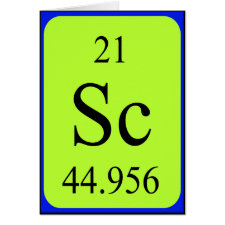
Authors: Svenson J, Zheng N, Nicholls IA
Article Title: A molecularly imprinted polymer-based synthetic transaminase.
Publication date: 2004
Journal: Journal of the American Chemical Society
Volume: 126
Issue: (27)
Page numbers: 8554-8560.
DOI: 10.1021/ja039622l
Alternative URL: http://www2.hik.se/dokument/pressreleaser/Artikel%20i%20JACS.pdf
Abstract: The design, synthesis, and evaluation of a molecularly imprinted polymer transaminase mimic is described. Methacrylic acid-ethylene glycol dimethacrylate copolymers were synthesized using, as a template, a transition state analogue (TSA) for the reaction of phenylpyruvic acid and pyridoxamine to yield phenylalanine and pyridoxal. Polymer suitability was established on the basis of 1H NMR studies of template-functional monomer interactions. Polymer recognition characteristics were examined in a series of HPLC studies using the polymers as chromatographic stationary phases. Selectivity for the TSA, relative to substrates and products, was observed in both aqueous and nonpolar media. In the latter case (chloroform/AcOH, 96:4), an enantioseparation factor (R) of 2.1 was obtained, and frontal chromatographic studies revealed the presence of 11.9 ( 0.2 ímol g-1 (dry weight) of enantioselective sites. Polymers imprinted with the L-form of the oxazine-based TSA induced a 15-fold enhancement of the apparent reaction rate (app. Vmax 2.5 x 10-7 mol s-1; app. Km 8.2 x 10-3 M) and enantioselective production of phenylalanine (32 ( 4% ee) for reactions conducted in an aqueous buffer system. Substrate selectivity was evident, and a turnover number ( kcat) of 0.1 s-1 was determined. This is the first example of the catalysis of sigmatropic shifts in aqueous media by molecularly imprinted polymers.



Join the Society for Molecular Imprinting

New items RSS feed
Sign-up for e-mail updates:
Choose between receiving an occasional newsletter or more frequent e-mail alerts.
Click here to go to the sign-up page.
Is your name elemental or peptidic? Enter your name and find out by clicking either of the buttons below!
Other products you may like:
 MIPdatabase
MIPdatabase









